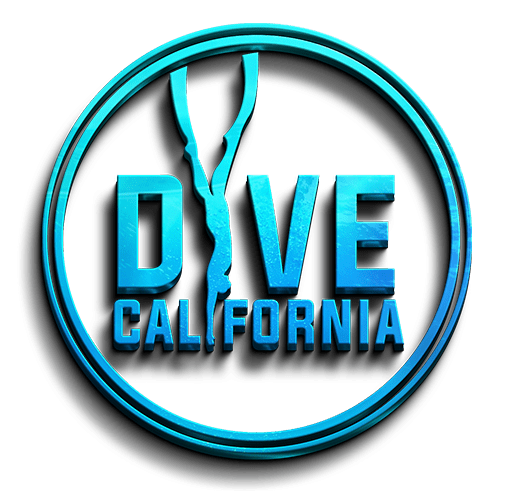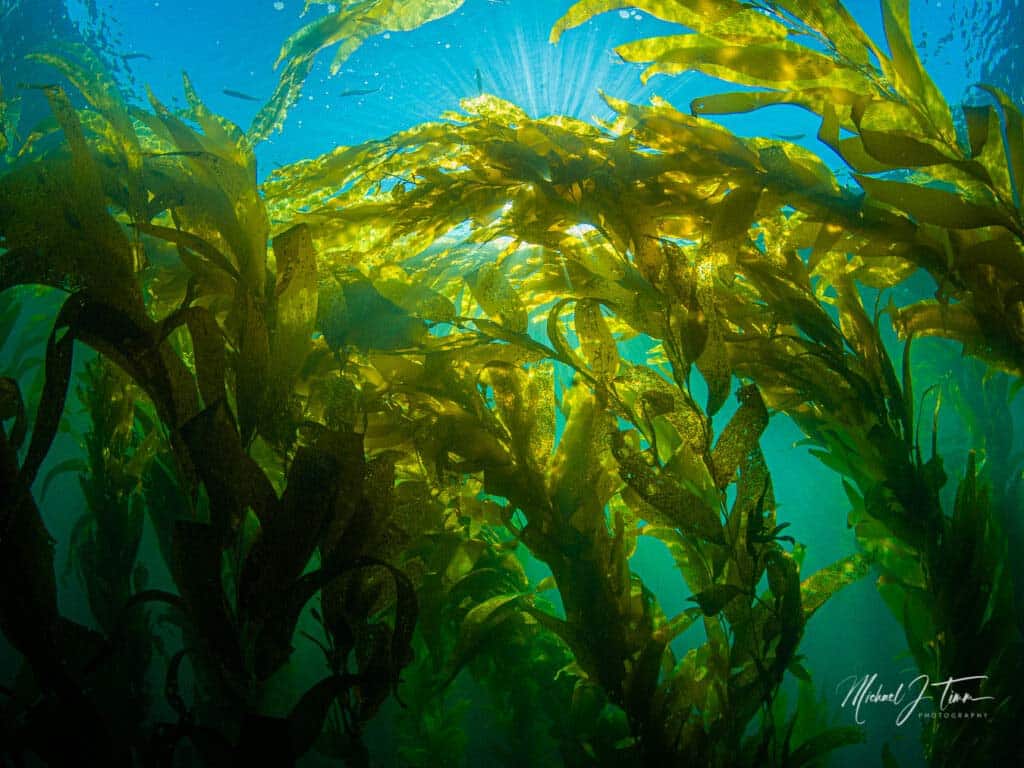
San Diego Kelp Forests
Guided Dives at the La Jolla Kelp Forest
The kelp forest is one of the most incredible habitats in nature. If you’re a scuba diver or freediver, you’ve got to dive the kelp forest at least once in your life—it’s a bucket list dive.
San Diego is one of the best places in the world to visit a kelp forest. While most kelp forests are found in regions with very cold water and weather, San Diego has some of the warmest [possible] water for kelp diving—not to mention spectacular weather, year-round.
Want to explore the San Diego kelp forests? There are two marvelous kelp forests in San Diego that you can visit any time of year.
Dive Right In: What is a Kelp Forest? | La Jolla Kelp Forest | Point Loma Kelp Forest

What’s a Kelp Forest?
Kelp is a type of algae that resembles a plant or underwater tree. The largest, fastest-growing species is giant kelp.
Aptly named, giant kelp grows vertically in the water (as fast as two feet per day!) and forms a canopy over the ocean surface.
A kelp forest (sometimes called a “giant kelp forest”) is an area where the kelp grows in thick, dense clusters with a very lush canopy.
Kelp forests are very important habitats because they:
- Provide food and shelter for all sorts of marine life
- Remove harmful carbon dioxide from the ocean and atmosphere (they help us breathe!)
- Give us the ingredients for products like toothpaste and ice cream
- Provide a large amount of our local seafood
Kelp can only grow in cold water and it needs a hard surface to grow on. Naturally, the rocky San Diego coastline is perfectly suited for kelp!

Kelp Forests in San Diego
There are two giant kelp forests in San Diego: the La Jolla Kelp Forest and the Point Loma Kelp Forest.
La Jolla is a shallow kelp forest while Point Loma is a deeper kelp forest. Because they’re at different depths, you’ll notice some big differences between them in terms of marine life and diving conditions.
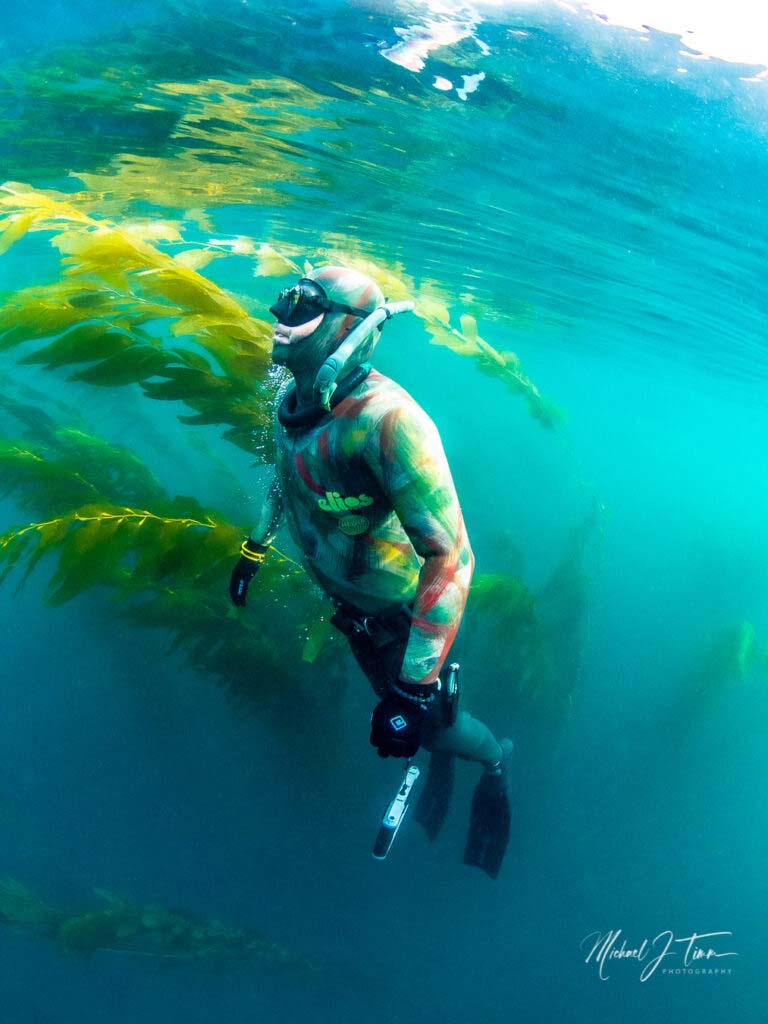
La Jolla Kelp Forest
The La Jolla Kelp Forest (also known as the “Boomer Kelp Forest” because it’s offshore from Boomer Beach) is the most accessible kelp bed in San Diego. This kelp forest can be easily reached from La Jolla Cove. No boat needed!
Here’s what you need to know about the La Jolla Kelp Forest:
- Shallow Depth: The depth of this kelp forest ranges from 30-50 feet, and strong currents are rare. That makes it a great dive site for beginners and for those who prefer an easy-going dive.
- Lots of Variety: When you dive the La Jolla kelp forest, you can also check out the big reefs and swim-throughs at La Jolla Cove. Compared to Point Loma, La Jolla is a more dynamic location for scuba diving.
- Bigger Animals: It’s easier to find marine mammals, sharks, and rays at the La Jolla kelp forest. La Jolla is also your best bet if you want to encounter sea lions.

How to Dive the La Jolla Kelp Forest
The La Jolla Kelp Forest can be easily reached on a shore dive, whether you’re scuba diving or freediving.
- Scuba Diving: If you’re going to scuba dive, you need to enter at La Jolla Cove. The kelp forest is about 200 yards west from the cove.
- Freediving: Lifeguards will not allow you to bring any flotation devices into La Jolla Cove, so freedivers should enter from Boomer Beach. The kelp forest is just west of Boomer Beach.
Although La Jolla Cove is considered a “beginner-friendly” dive site, you still need to take great caution when diving here. Here are a couple of things to be mindful of:
- Visibility: The La Jolla kelp forest has unpredictable visibility. On its best days, viz ranges from 20-40 feet. On its worst days, the viz may be 10 feet or less. It can be difficult to safely navigate to the kelp forest and back unless you’re proficient in underwater navigation.
- Rocks: As you’re kicking out into the Cove, you need to be wary of underwater rock outcroppings that are hidden just inches below the water. You can be seriously injured if the surf pushes you against or on top of these rocks.
- Surge: The surge at La Jolla Cove can be very strong, which can make diving and navigation more difficult.
Never been diving at La Jolla Cove? Take our guided scuba tour! Our master dive guides will take you out to the kelp forest and show you how to find many of the beautiful animals that call it home.
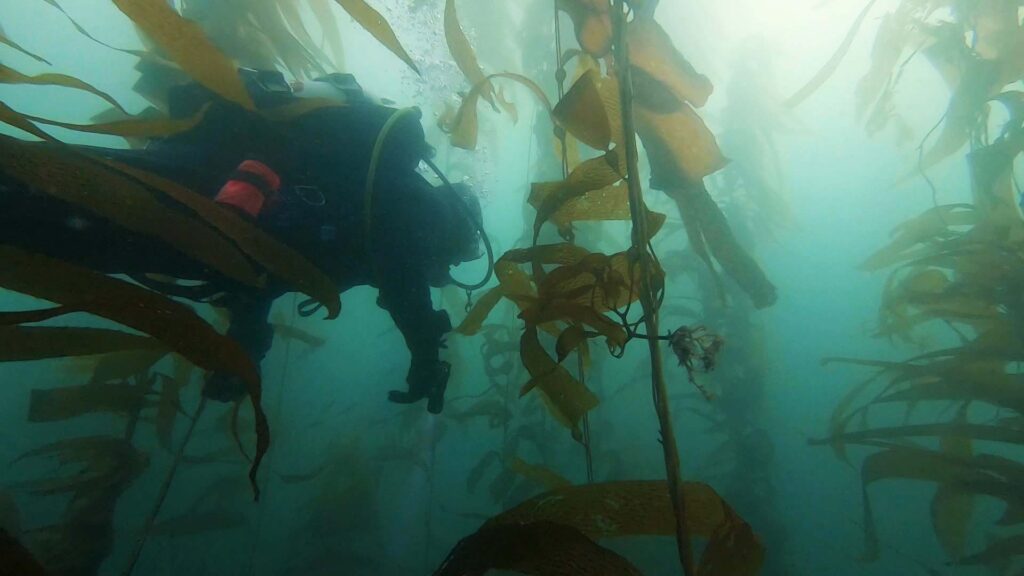
Can I Do a Boat Dive at the La Jolla Kelp Forest?
Local dive boats do visit the La Jolla kelp forest, but they only visit during the spring months (for sevengill shark season). Shore diving is a more convenient way to dive the kelp forest because it’s so close to the beach.
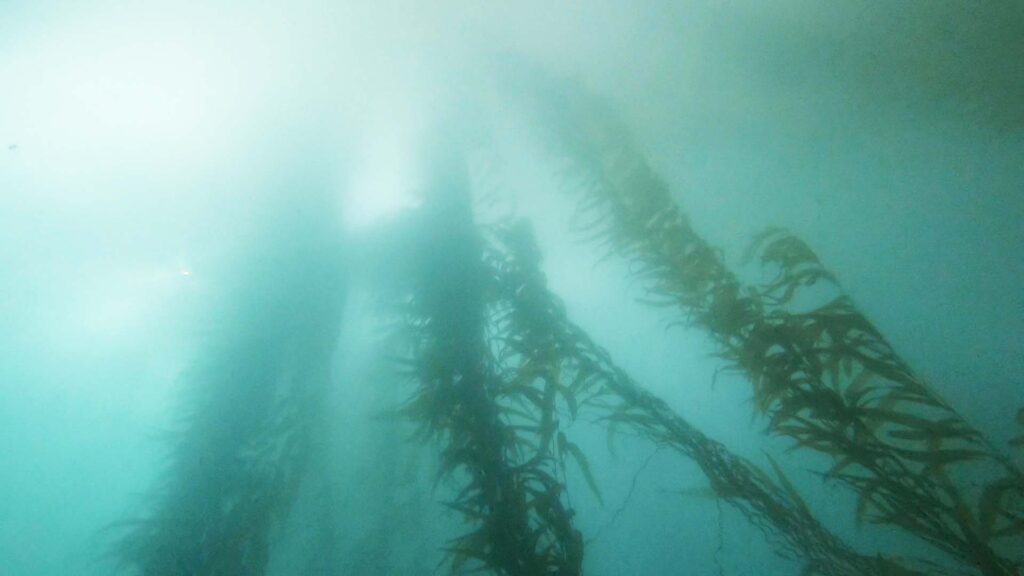
Point Loma Kelp Forest
The Point Loma Kelp Forest is located just off the Point Loma peninsula, near San Diego Bay. Marine biologists consider this to be one of the largest, healthiest kelp forests in California.
Many divers consider the La Jolla kelp forest to be a single dive site. That’s not the case with Point Loma. The Point Loma kelp forest is so large that it contains a huge variety of dive sites within its enormous kelp beds.
Due to its location, this kelp forest can only be reached on a boat dive.
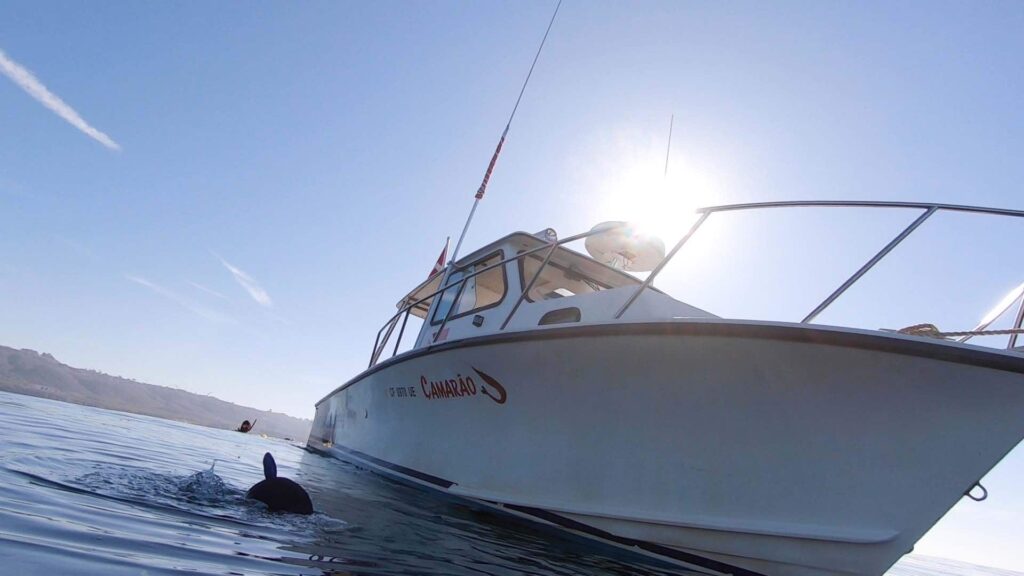
Here’s what you need to know about the Point Loma Kelp Forest:
- Larger Kelp: You’ll find much taller kelp at Point Loma because it’s a deeper kelp forest. The depth at Point Loma ranges from 40 to 70 feet, and the height of the giant kelp will often match the depth at which you’re diving. The Point Loma kelp forest is a truly awe-inspiring diving experience.
- Great for Macro Photography: The kelp may be large, but the wildlife at Point Loma tends to be on the smaller side. There’s an excellent variety of nudibranchs, algae, and invertebrates at Point Loma, which makes it popular with macro photographers. It’s unlikely you’ll encounter many sea lions.
- Tougher Diving: There are stronger currents at the Point Loma kelp forest, and some of the dive sites may only be suitable for advanced divers. If you’re diving where the canopy is very thick, there may be very little light at the bottom. The deeper depth also means that the water is colder than in La Jolla.
- Boat Diving Only: You can only reach the Point Loma Kelp Forest on a boat dive. It lies about 600 yards offshore from the peninsula–much too far for a surface swim (shore entries from Point Loma are illegal, anyways).
The Point Loma kelp forest is perfect for freediving (especially for constant weight and free immersion). Freedivers can swim up, down, and around the giant kelp. You can try to hit the bottom of the kelp forest or you can explore the upper canopy.
Freedivers are usually allowed to book spots on the local dive boat excursions, so consider getting your freediving certification if you haven’t already. Freediving is the best way for non-scuba divers to explore the San Diego kelp forests.
La Jolla and Point Loma: Side-by-Side Comparison
Here you can see the difference between the two San Diego kelp forests:
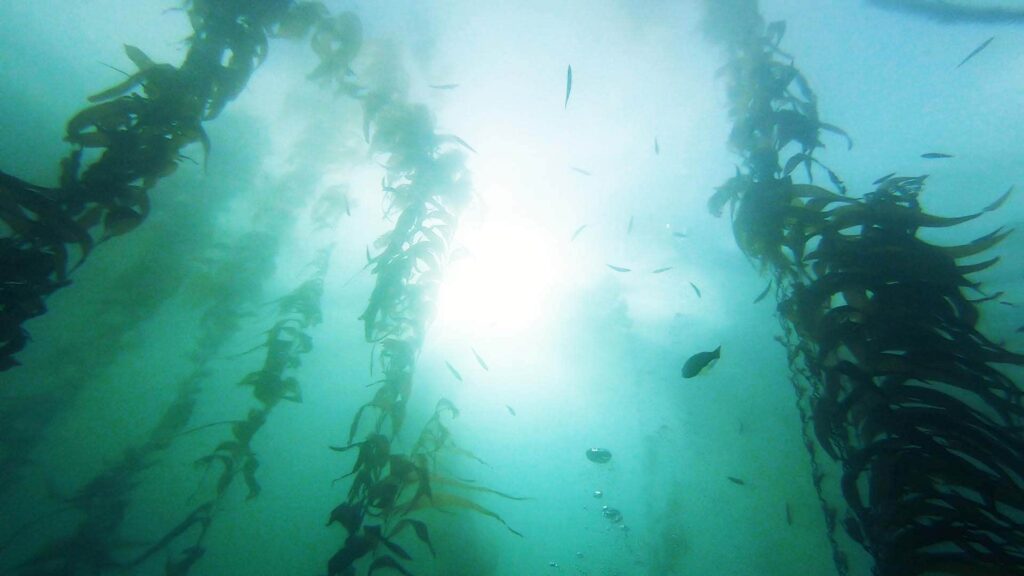
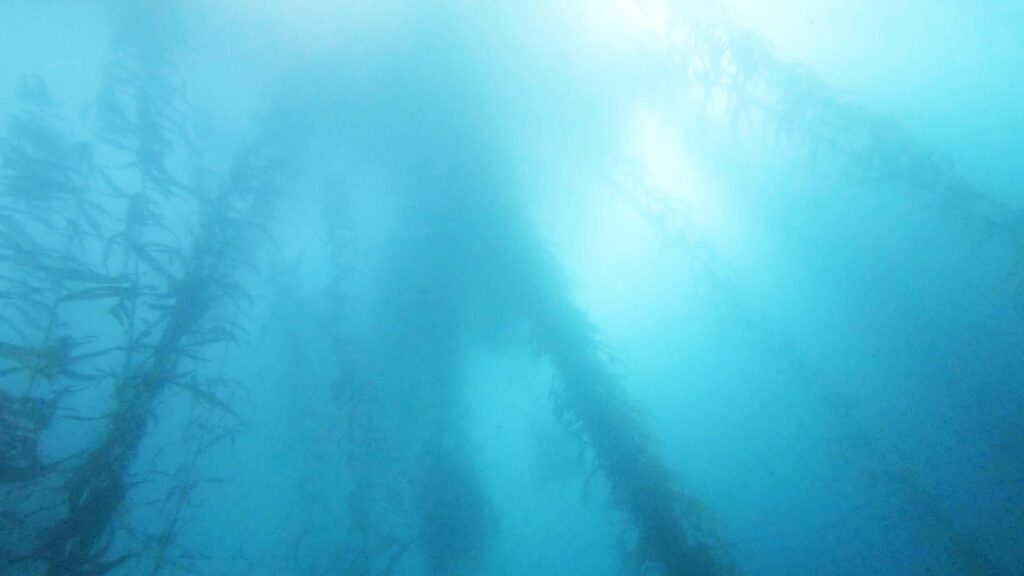
Notice that the La Jolla kelp forest is shorter and gets more light penetration from the sun. You can also see how the Point Loma kelp forest is taller and blocks a lot of sunlight with its thick canopy.
What Animals Can You Find in the San Diego Kelp Forests?
For the most part, La Jolla and Point Loma host the same type of marine life:
- Giant Kelp
- Sea Lions
- Garibaldi
- Black Sea Bass
- Shovelnose Guitarfish
- Sevengill Sharks
- Tope Sharks
- Blue Sharks
- California Spiny Lobsters
- Sheephead Crabs
- Kelp Bass
- Sheephead
- Horn Sharks
- Moray Eels
As we mentioned earlier, it’s easier to spot marine mammals, sharks, and rays at the La Jolla kelp forest. The Point Loma kelp forest has larger and more expansive kelp beds, although the wildlife tends to be smaller.
